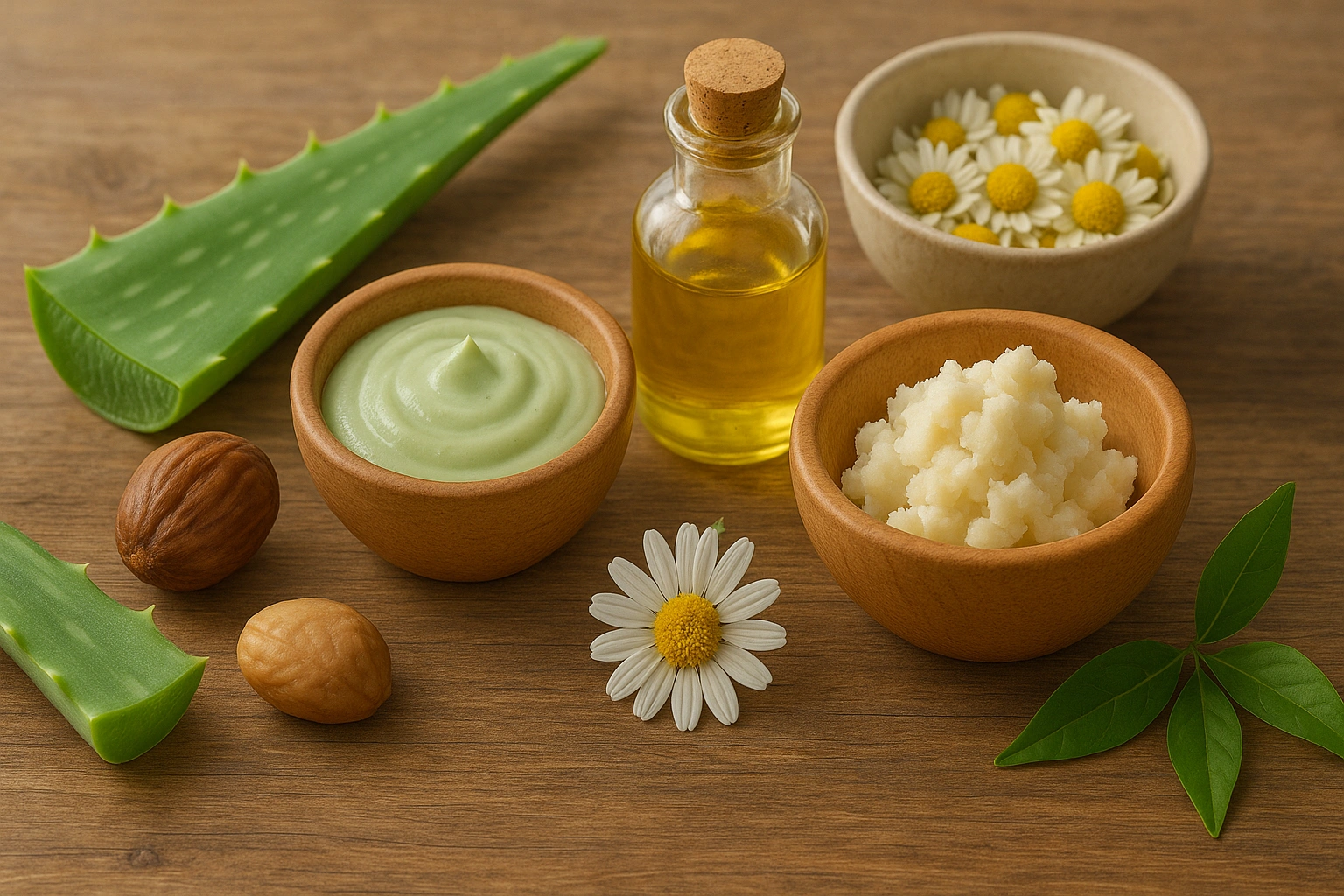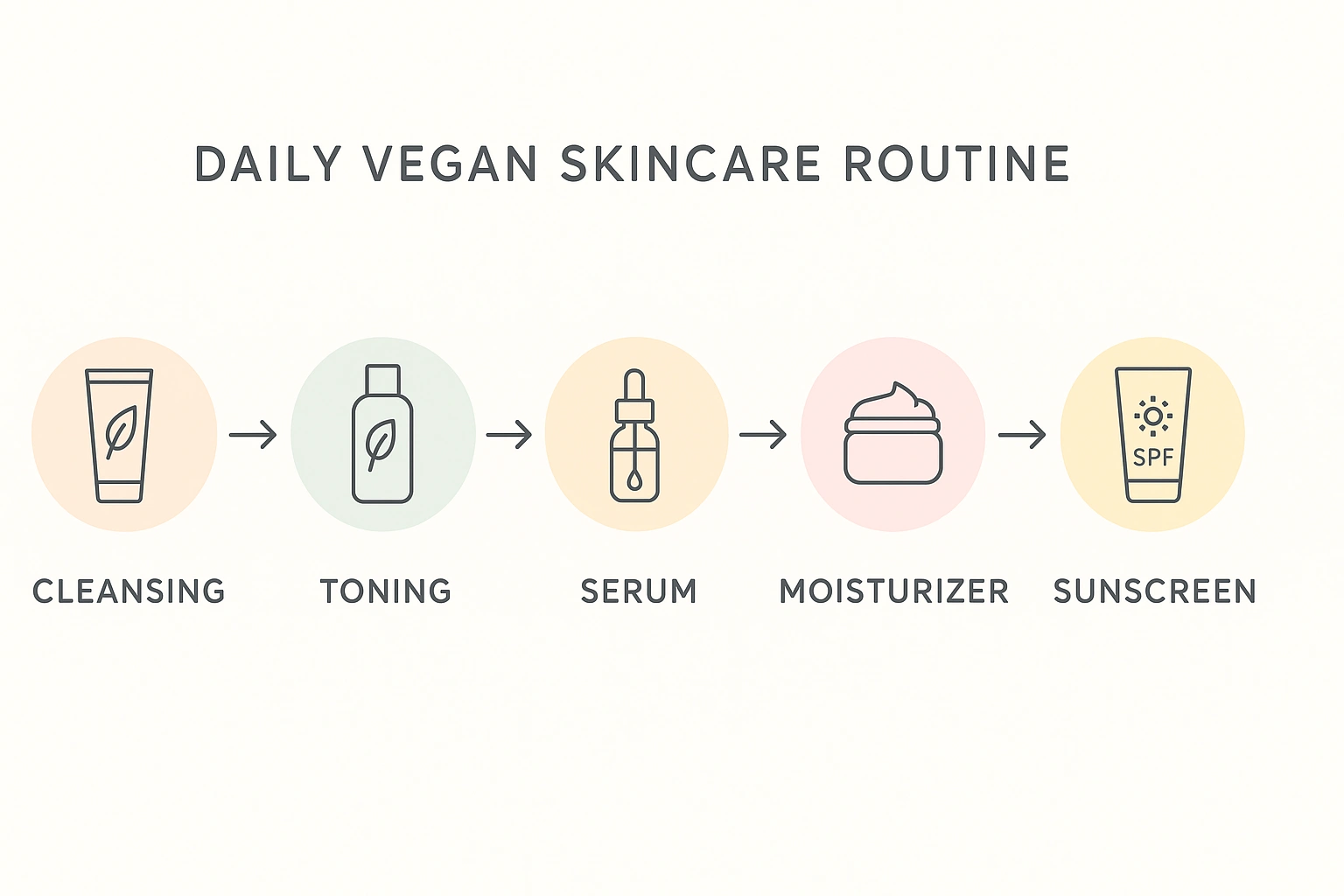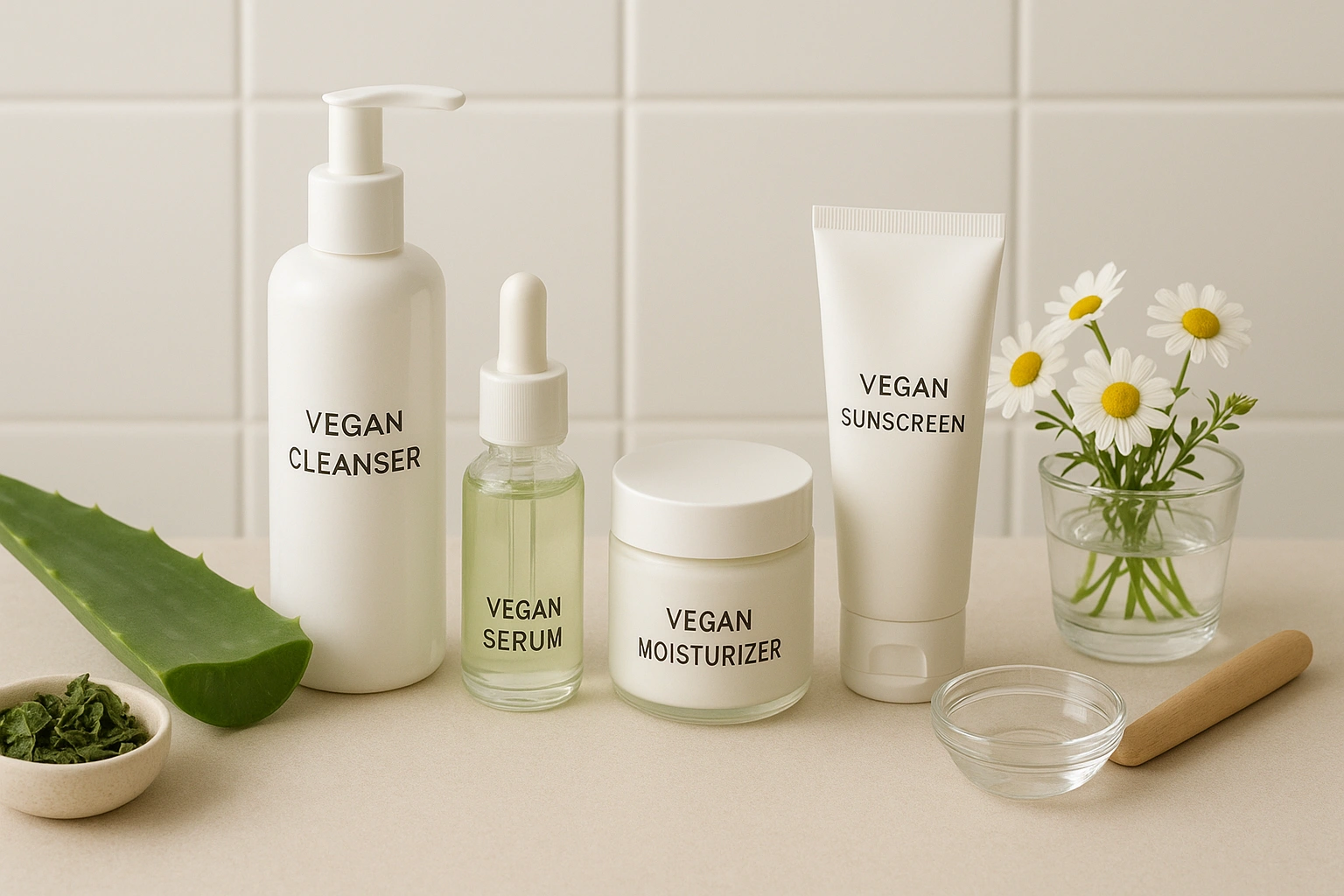- Introduction
- What is Vegan Skincare?
- Why Go Vegan with Your Skincare?
- Building Your Core Vegan Skincare Routine: A Step-by-Step Guide
- DIY Vegan Skincare Recipes to Try at Home
- Vegan vs. Cruelty-Free vs. Natural: Understanding the Labels
- Common Mistakes to Avoid When Switching to Vegan Skincare
- Expert Tips for a Thriving Plant-Based Skincare Routine
- Frequently Asked Questions (FAQ)
- Conclusion
Introduction
Have you ever stood in a skincare aisle, overwhelmed by endless ingredient lists filled with unpronounceable chemicals and hidden animal byproducts? You’re not alone. In a world saturated with complex products, the shift towards conscious, ethical beauty is more than a trend—it’s a movement. Creating a vegan skincare routine isn’t about restriction; it’s about empowerment. It’s about choosing potent, plant-derived ingredients that nourish your skin and align with your values, making your vegan skincare routine both effective and meaningful.
By the end of this guide, you’ll have a clear, step-by-step roadmap to build a personalized and effective vegan skincare routine at home. We’ll demystify labels, share expert tips, and even provide simple DIY recipes to get you started on a path to healthier skin and a kinder lifestyle, proving that a vegan skincare routine can be simple, affordable, and powerful.
What is Vegan Skincare?
In simple terms, a vegan skincare routine refers to products made without any animal-derived ingredients or byproducts.
This goes beyond the obvious, like honey or beeswax, and shows why choosing a vegan skincare routine matters for anyone who wants clean and conscious beauty.
It also covers lesser-known ingredients like lanolin (from sheep’s wool), collagen (often from fish or cows), and carmine, making a vegan skincare routine safer for those avoiding hidden animal byproducts.
By understanding what to exclude, a vegan skincare routine becomes a straightforward way to protect your skin while aligning with ethical values.
But its relevance in 2025 goes deeper. The global vegan beauty market is projected to reach over $25 billion by 2029, according to Statista. This explosive growth is driven by a collective desire for transparency, sustainability, and ethical production. A key distinction to understand is “vegan” vs. “cruelty-free.” While vegan products contain no animal ingredients, “cruelty-free” means the product (and its ingredients) was not tested on animals. Ideally, you want products that are both.

Why Go Vegan with Your Skincare?
Adopting a plant-based approach to skincare offers benefits that extend from your complexion to the planet, which is why starting a vegan skincare routine can feel both practical and purposeful.
It’s a holistic choice that nurtures you inside and out, and a vegan skincare routine ensures your beauty habits align with values of kindness and sustainability.
By focusing on gentle botanicals, a vegan skincare routine supports healthier skin without the need for animal-derived ingredients.
Ultimately, embracing a vegan skincare routine means caring for yourself while also contributing to a more compassionate world.
Kinder to Animals (The Ethical Choice)
This is the most apparent benefit. By choosing vegan products, you are directly voting against industries that exploit animals for testing and ingredients. It’s a compassionate choice that ensures no living being was harmed for your beauty regimen.
Better for Your Skin (Nutrient-Rich Ingredients)
Plants are the earth’s original pharmacies. Ingredients like aloe vera, green tea, vitamin C (from citrus), and hyaluronic acid (often from microbial fermentation) are packed with antioxidants, vitamins, and anti-inflammatory compounds. A well-formulated vegan skincare routine can be gentler yet more potent, as it relies on nature’s finest to soothe, repair, and protect your skin.
A More Sustainable Beauty Footprint
Plant-based ingredients generally require fewer resources to produce than animal-derived ones. This lifestyle choice aligns with a broader commitment to sustainability, a field where innovative technologies are constantly emerging. For more on how technology is driving eco-friendly solutions, you can explore the work being done at airobotics.biz.id.
Building Your Core Vegan Skincare Routine: A Step-by-Step Guide
Creating a routine doesn’t have to be complicated. Focus on these five core steps, and you’ll have a solid foundation for healthy, glowing skin.

Step 1: Cleanse
Purpose: To wash away dirt, oil, and impurities without stripping the skin’s natural moisture barrier.
What to Look For:
- For Oily/Acne-Prone Skin: Cleansers with salicylic acid (from willow bark), tea tree oil, or charcoal.
- For Dry/Sensitive Skin: Creamy or oil-based cleansers with ingredients like oat extract, chamomile, or avocado oil.
Step 2: Tone
Purpose: To balance the skin’s pH after cleansing, remove any last traces of impurities, and prep the skin for serums and moisturizers.
What to Look For:
- Alcohol-free formulas are a must.
- Ingredients like rosewater, green tea extract, or witch hazel (for oil control) are excellent choices.
Step 3: Treat with a Serum
Purpose: Serums are concentrated treatments that target specific concerns like fine lines, dark spots, or dehydration.
What to Look For:
- For Brightening: Vitamin C serum.
- For Hydration: Hyaluronic acid serum.
- For Anti-Aging: Bakuchiol (a plant-based retinol alternative) or niacinamide (Vitamin B3).
Step 4: Moisturize
Purpose: To hydrate the skin and lock in all the beneficial ingredients from your previous steps.
What to Look For:
- For Daytime: A lightweight lotion or gel.
- For Nighttime: A richer cream with ingredients like shea butter, jojoba oil, or rosehip seed oil.
Step 5: Protect with Sunscreen
Purpose: This is the most critical step to prevent premature aging and skin cancer. It’s non-negotiable, every single day.
What to Look For:
- Mineral-based sunscreens with zinc oxide or titanium dioxide are often preferred in clean beauty circles.
- Look for “broad-spectrum” protection with an SPF of 30 or higher.
DIY Vegan Skincare Recipes to Try at Home
Ready to get hands-on? These simple, effective recipes use ingredients you might already have in your kitchen.
Soothing Oat & Chamomile Face Mask (For Sensitive Skin):
- Grind 2 tablespoons of rolled oats into a fine powder.
- Brew a strong cup of chamomile tea and let it cool completely.
- Mix 1 tablespoon of the oat powder with 2 tablespoons of the cooled tea to form a paste.
- Apply to your face, leave on for 15 minutes, and rinse with lukewarm water.
Brightening Green Tea & Lemon Toner (For Oily Skin):
- Brew a cup of organic green tea and let it cool.
- Add 1 teaspoon of fresh lemon juice.
- Pour into a spray bottle and store in the fridge for up to a week.
- Mist onto your face after cleansing.
| Aspect | DIY Skincare | Store-Bought Vegan Skincare |
|---|---|---|
| Pros | 100% fresh, affordable, total ingredient control. | Professionally formulated, stable, longer shelf life. |
| Cons | Short shelf life, potential for irritation, less potent. | Can be expensive, risk of “greenwashing.” |
| Best For | Occasional treatments, simple masks, and toners. | Daily core routine (serums, moisturizers, SPF). |
Vegan vs. Cruelty-Free vs. Natural: Understanding the Labels
Navigating the world of conscious beauty can be confusing. This table breaks down the key differences.
| Label | What It Means | Key Differentiator | Best For |
|---|---|---|---|
| Vegan | Contains no animal-derived ingredients. | Focus is on the ingredients. | Consumers avoiding all animal byproducts for ethical or personal reasons. |
| Cruelty-Free | The final product and its ingredients were not tested on animals. | Focus is on the testing process. | Consumers who prioritize preventing animal suffering in labs. |
| Natural | Contains ingredients sourced from nature. | This term is unregulated and can be misleading. | Consumers looking for plant and mineral-based formulas (but requires careful label reading). |
Common Mistakes to Avoid When Switching to Vegan Skincare
- Not Patch Testing: New plant-based ingredients can still cause reactions. Always test a new product on a small patch of skin first.
- Expecting Overnight Results: It takes time for your skin to adjust. Give your new routine at least 4-6 weeks.
- Assuming “Natural” Means “Better”: Poison ivy is natural, but you wouldn’t put it on your face. Formulation matters more than just the source of ingredients.
- Forgetting to Check “Accidentally Vegan” Products: Many of your current favorites might already be vegan! Check their ingredient lists.
- Ignoring the Rest of Your Lifestyle: Great skin is also the result of a balanced diet, proper hydration, and good sleep.
- Falling for Greenwashing: Look for official certifications like The Vegan Society logo or Leaping Bunny (for cruelty-free) to ensure a brand’s claims are legitimate.
Expert Tips for a Thriving Plant-Based Skincare Routine
- Read the INCI List: Don’t just trust the front of the bottle. Learn to read the International Nomenclature of Cosmetic Ingredients (INCI) list on the back.
- Introduce One Product at a Time: This helps you identify what’s working and what might be causing irritation.
- Listen to Your Skin: Your skin’s needs can change with the seasons, your diet, and stress levels. Be ready to adjust your routine.
- Don’t Over-Exfoliate: While beneficial, overdoing it with acids or scrubs can damage your skin barrier. Stick to 1-3 times per week.
“The most effective plant-based skincare tips extend beyond products. A diet rich in antioxidants, healthy fats, and water provides the foundational building blocks for vibrant skin from within.”
— Dr. Anya Sharma, board-certified dermatologist
Frequently Asked Questions (FAQ)
Q: Is a vegan skincare routine more expensive?
A: It doesn’t have to be. While there are luxury vegan brands, many affordable and drugstore brands now offer excellent vegan options. Plus, incorporating simple DIY recipes can significantly cut costs.
Q: Can vegan skincare help with acne?
A: Absolutely. Many plant-based ingredients like tea tree oil, salicylic acid (from willow bark), and niacinamide are proven to be highly effective for treating and preventing acne.
Q: How can I tell if a product is truly vegan?
A: The most reliable way is to look for a certification logo from a trusted organization like The Vegan Society or PETA. If there’s no logo, you’ll need to carefully read the full ingredient list.
Q: What are some common non-vegan ingredients to watch out for?
A: Look out for honey, beeswax, carmine, lanolin, collagen, elastin, and squalene (unless specified as plant-derived).
Q: Does vegan skincare expire faster?
A: Not necessarily. Commercially produced vegan products contain natural or synthetic preservatives to ensure a stable shelf life. However, preservative-free DIY recipes will expire very quickly and should be made in small batches.
Conclusion
Embarking on a vegan skincare routine is a rewarding journey of discovery, connecting you more deeply with the products you use and the planet you live on.
By focusing on a core vegan skincare routine of cleansing, toning, treating, moisturizing, and protecting, you can build a powerful regimen that is both effective and ethical.
Remember that a vegan skincare routine works best when you listen to your skin, stay patient with the process, and choose products that truly reflect your values.
In the end, your skin—and the planet—will thank you for committing to a vegan skincare routine that nurtures beauty with compassion.
For more information on the science behind skin health, the American Academy of Dermatology is an excellent resource.
